Picture yourself standing beneath a mesmerising night sky, the vibrant colours of the Northern Lights dancing above you. Northern Lights Northern Ireland offers a truly magical experience for those who want to chase this breathtaking celestial display. With stunning landscapes and unique viewing opportunities, join us as we reveal the prime locations and best times to see the aurora borealis in Northern Ireland.
Key Takeaways
Experience the awe-inspiring Northern Lights in Northern Ireland with ideal conditions, stunning locations and peak viewing months.
Utilize helpful tools and resources to track auroral activity for an optimal experience.
Capture beautiful photos of the aurora borealis with essential equipment such as a tripod, wide angle lens and lithium batteries.
The Magic of the Northern Lights in Northern Ireland
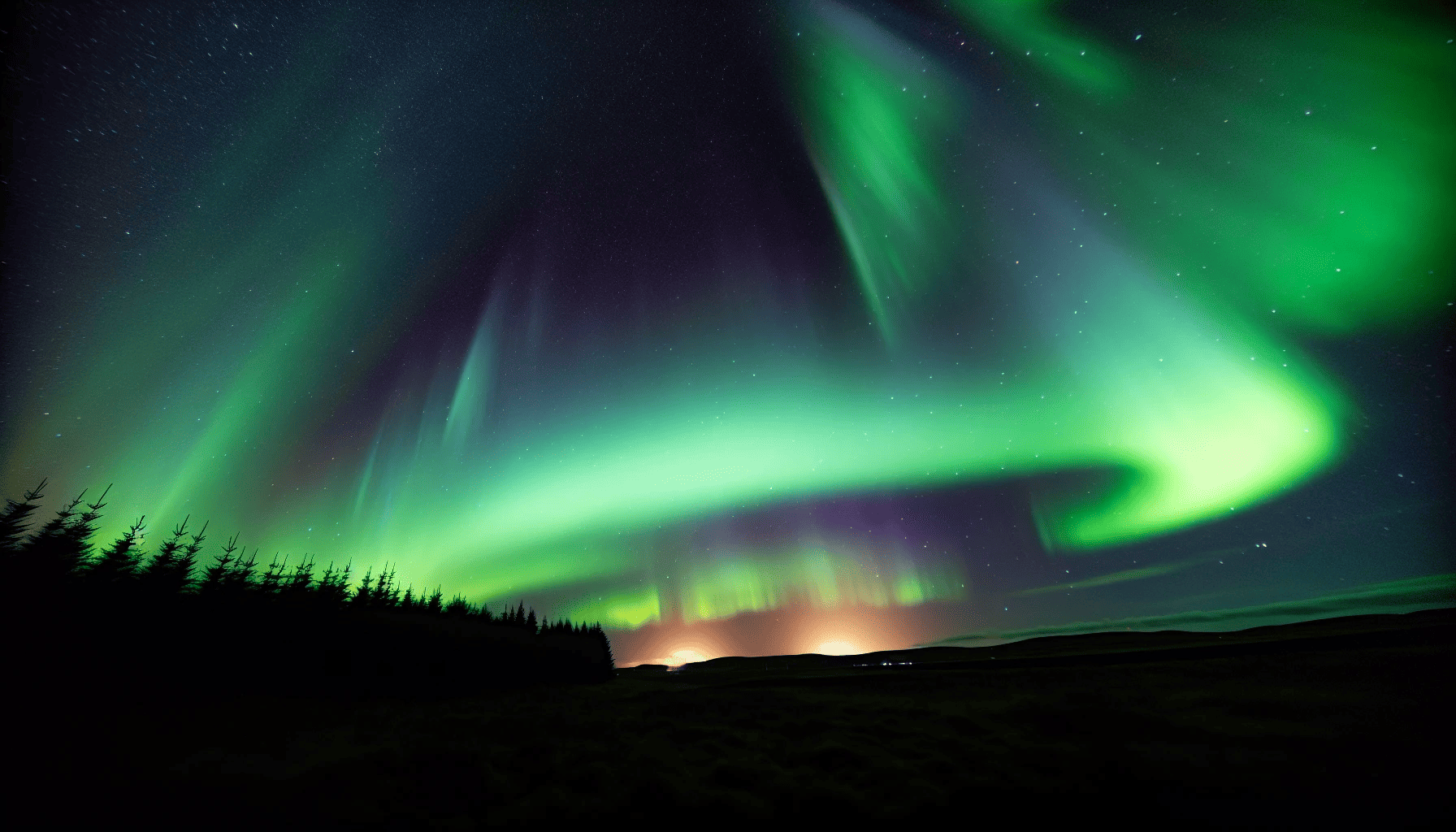
The Northern Lights, or aurora borealis, are a natural light display caused by charged particles from the sun interacting with the earth’s atmosphere. These particles collide with gas molecules, creating a spectacular array of colours that can be seen in the night sky. Northern Ireland, with its dramatic landscapes and relatively low light pollution, offers a front-row seat for witnessing this awe-inspiring celestial event.
In Northern Ireland, the best places to see the Northern Lights are those with clear skies, dark nights, and minimal light pollution. These optimal conditions allow the vibrant colours of the aurora to shine through, providing an unforgettable experience for stargazers and photographers alike.
Understanding the Aurora Borealis
The aurora borealis occurs when charged particles from the sun, carried by solar winds, interact with the Earth’s magnetic field. The particles are then funnelled down toward the poles, where they collide with atoms and molecules in the Earth’s upper atmosphere. This collision releases energy in the form of light, creating the stunning phenomenon known as the Northern Lights. Similarly, the South Poles experience their own version of this phenomenon.
The colours of the aurora can range from:
Pale green
Pink
Red
Yellow
Blue
Violet
These colours depend on the type of gas molecules, including oxygen molecules, being excited and the altitude of the interaction. The Northern Lights are most commonly visible within a few degrees of latitude of the Arctic Circle, making Northern Ireland an ideal location for chasing this mesmerizing celestial display.
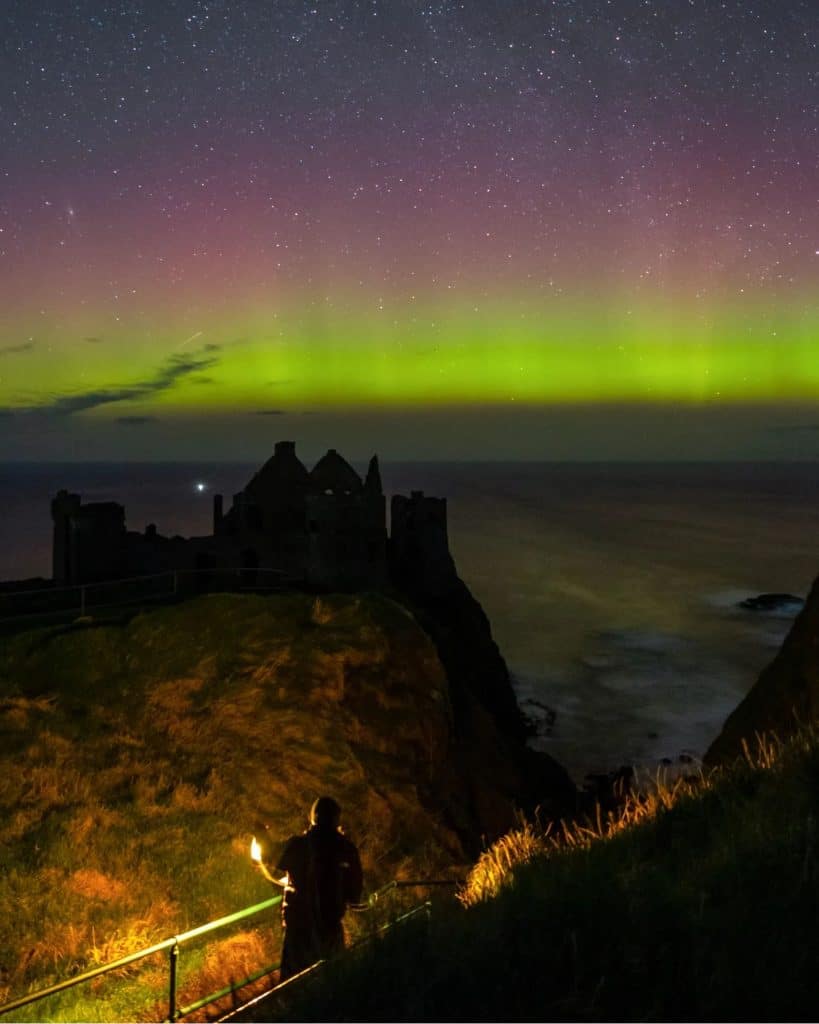
The Connection Between Solar Activity and the Northern Lights
Solar activity plays a significant role in the visibility and intensity of the Northern Lights. When solar flares, coronal mass ejections, or solar wind send bursts of energy and particles towards Earth, these particles interact with the Earth’s magnetic field, causing the particles to collide with atoms and molecules in the Earth’s upper atmosphere. This process releases energy in the form of light, creating the remarkable Northern Lights.
Large geomagnetic storms, caused by strong surges of solar wind called coronal mass ejections, can result in more vibrant and widespread displays of the aurora borealis in the northern hemisphere. These storms can push the aurora zone further south, increasing the chances of seeing a vivid display in Northern Ireland. The larger the geomagnetic storm, the more brilliant the lights will be, and the further south they will be visible, even reaching areas close to the north and south poles.
Ideal Conditions for Viewing the Northern Lights in Northern Ireland
Ideal conditions, such as clear skies, dark nights, and minimal light pollution, are necessary to enhance the probability of observing the Northern Lights in Northern Ireland.
The subsequent sections provide a detailed analysis of these factors.
Clear Skies and Dark Nights
Clear skies and dark nights are essential for the best possible experience of the Northern Lights. Clouds can block the view of the aurora, while moonlight can make the display appear less vibrant. During the peak viewing months, long and dark nights provide ample opportunities to witness the aurora in all its glory.
The Irish National Meteorological Service’s website offers a page that is updated every 15 minutes, providing an excellent resource for checking cloud cover for viewing the Northern Lights in Ireland. Keeping an eye on weather updates and favouring clear skies will heighten your chances of observing this extraordinary spectacle.
Away from Light Pollution
Observing the Northern Lights from areas with low light pollution is key to appreciating their stunning display. Bright lights from cities, towns, and other sources of artificial light can wash out the colours of the aurora, making it more challenging to see the full beauty of the display.
Choosing locations with low light pollution, like rural areas or isolated spots along Northern Ireland’s north coast, will allow you to witness the Northern Lights at their most intense. The breathtaking colours and mesmerizing movement of the aurora will be even more vivid and memorable in these darker settings.
Prime Locations for Northern Lights Viewing in Northern Ireland
Northern Ireland boasts several prime locations to observe the Northern Lights, each with its unique perks and beautiful scenery. The upcoming sections cover some top spots such as:
Antrim Coast
Rathlin Island
Mourne Mountains
Giant’s Causeway
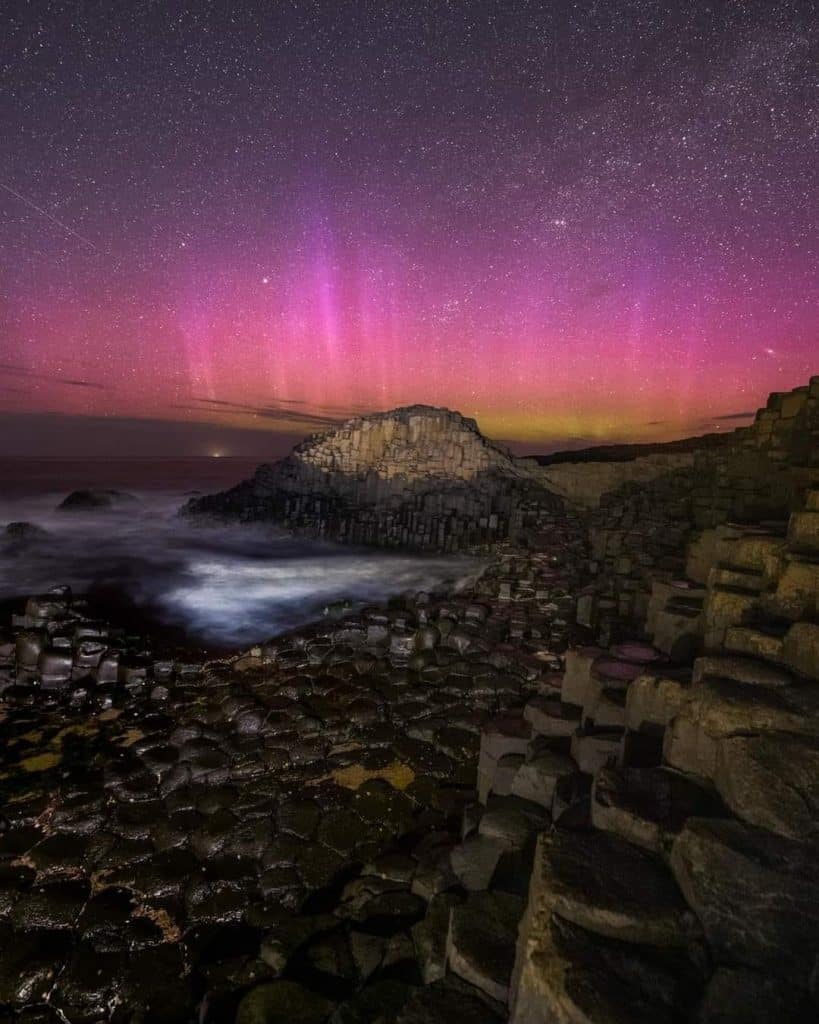
Giant’s Causeway, a UNESCO World Heritage Site, boasts a dramatic landscape of interlocking basalt columns formed by ancient volcanic activity. Its remote location on the northern coast of Northern Ireland provides minimal light pollution, making it an ideal spot for viewing the Northern Lights.
The local lighthouse and Ballyhillin Beach are some of the most incredible places at Giant’s Causeway to witness the majestic Northern Lights. With an unobstructed view of the sky and a stunning backdrop, this location offers a truly unforgettable aurora viewing experience.
Antrim Coast
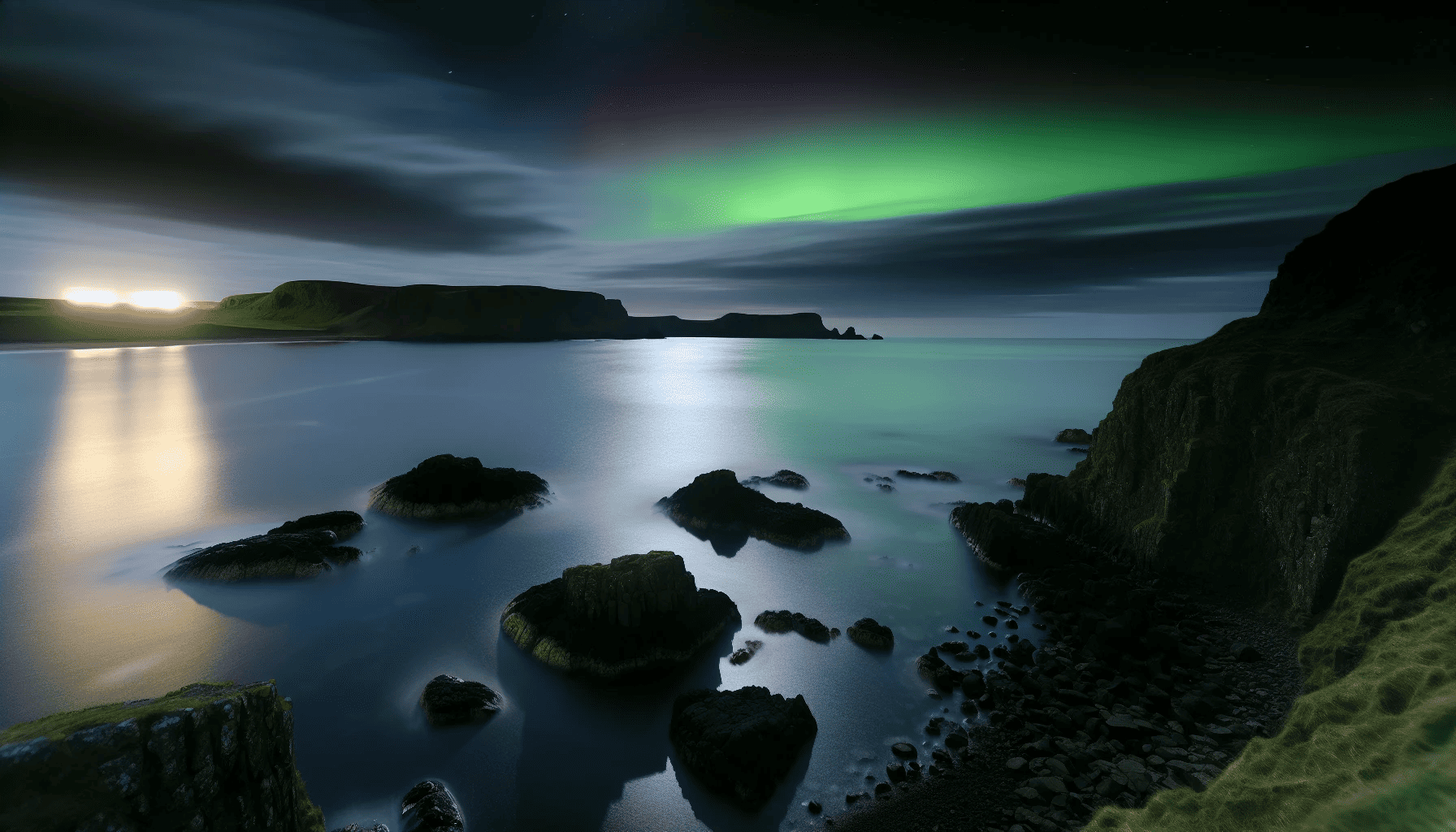
The Antrim Coast, with its breathtaking landscapes and dark skies, offers several secluded spots for Northern Lights viewing. From the rugged cliffs to the serene beaches, this stretch of coastline provides a picturesque setting for witnessing the aurora borealis.
Some exceptional viewing spots along the Antrim Coast include:
Donegal
The North Mayo Coast, located in County Mayo
Achill Island
The Mullaghmore Peninsula, part of County Sligo
These locations offer clear views of the northern horizon, minimal light pollution, and stunning natural scenery, making them ideal for chasing the Northern Lights in Northern Ireland.
Rathlin Island
Located just two and a half miles off the Northern Irish coastline, Rathlin Island is a remote and enchanting location for viewing the Northern Lights. With minimal light pollution and a peaceful atmosphere, the island provides an ideal setting for experiencing the celestial spectacle.
Rathlin Island is accessible by ferry, offering a unique and thrilling journey for those seeking to witness the Northern Lights in a truly secluded location. Once on the island, you’ll have an unobstructed view of the night sky, allowing you to fully immerse yourself in the beauty of the aurora borealis.
Mourne Mountains
The Mourne Mountains, with their dramatic peaks and sweeping landscapes, provide an ideal location for viewing the Northern Lights in Northern Ireland. The mountains offer elevated vantage points, allowing for clear views of the northern horizon and the mesmerizing display of the aurora borealis.
During the peak viewing months, the Mourne Mountains are a popular destination for Northern Lights enthusiasts, providing ample opportunities to witness the breathtaking display. With minimal light pollution and awe-inspiring scenery, the Mourne Mountains are a must-visit location for chasing the Northern Lights in Northern Ireland.
Best Times to Chase the Northern Lights in Northern Ireland
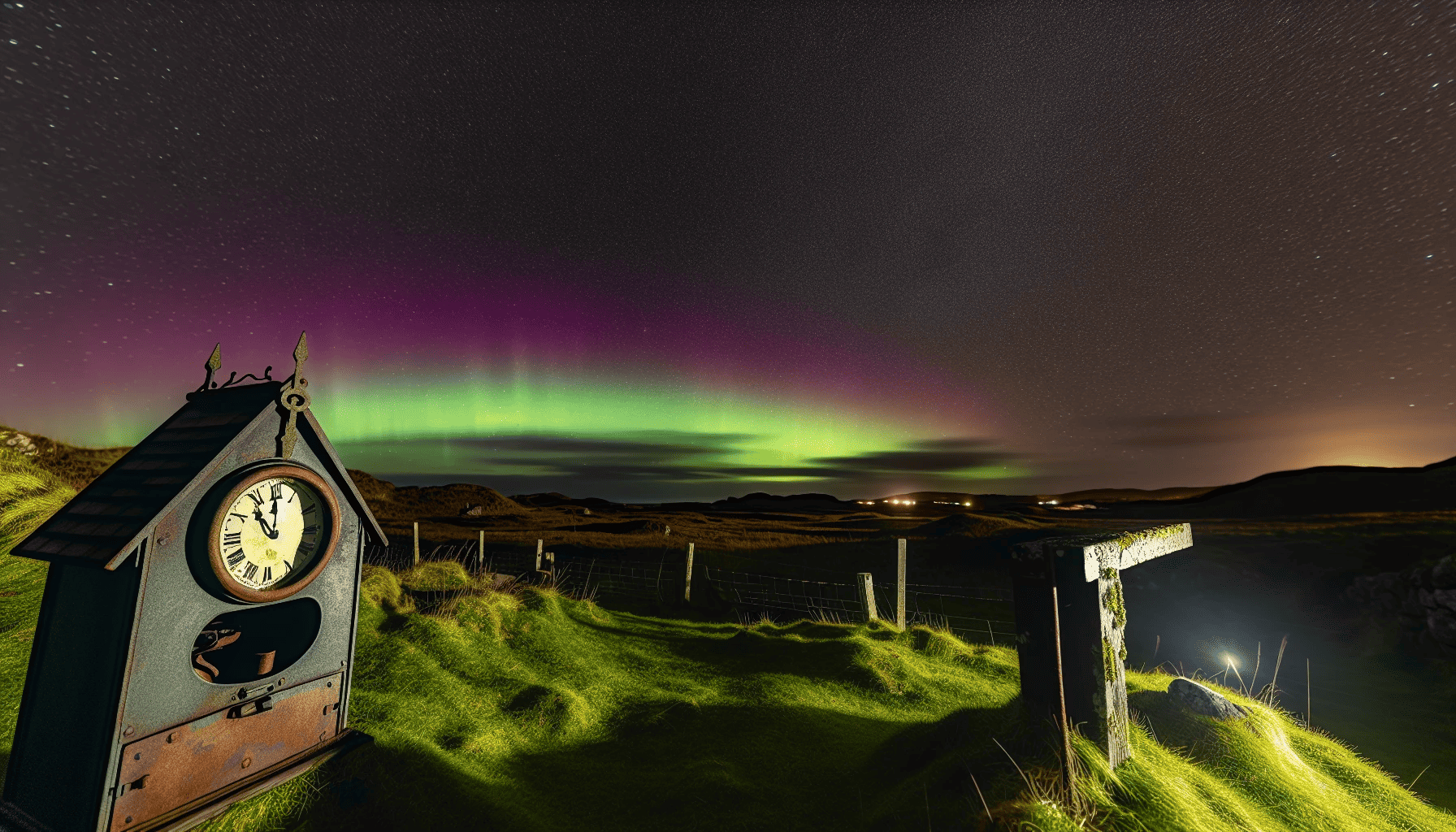
To enhance your probability of observing the Northern Lights in Northern Ireland, planning your aurora viewing adventure during peak viewing months and optimal viewing hours is necessary.
The upcoming sections will cover the optimal times to witness this enchanting celestial display.
Peak Viewing Months
The peak viewing months for the Northern Lights in Northern Ireland are September to April. During this time, the Earth’s tilt allows for an excellent alignment of the Earth’s magnetic field with solar winds, resulting in a more vibrant display of the aurora borealis.
In addition to the increased chances of visibility during the peak months, the longer and darker nights of the winter season provide even more opportunities to witness the Northern Lights in all their glory. By planning your aurora-chasing adventure during these months, you’ll maximize your chances of experiencing this breathtaking celestial event.
Optimal Viewing Hours
The optimal viewing hours for the Northern Lights are typically between midnight and 2 am. During these hours, the sky is at its darkest, allowing the vibrant colours and mesmerizing movement of the aurora to shine through. Additionally, solar activity tends to be higher during this time, further increasing the chances of witnessing a spectacular display.
By planning your Northern Lights viewing adventure during the optimal hours, you’ll have the best opportunity to experience the breathtaking beauty of the aurora borealis. Remember to dress warmly, as nights can be chilly, and keep an eye on weather conditions to ensure clear skies for an unforgettable experience.
Useful Tools and Resources for Tracking the Northern Lights
To maximize your Northern Lights viewing journey, you must use a variety of tools and resources to track the aurora borealis. The subsequent sections will examine some leading resources, including Aurora forecast websites, apps, and social media accounts.
Aurora Forecast Websites and Apps
Aurora forecast websites and apps provide real-time information on solar activity and visibility predictions for the Northern Lights, helping you plan your aurora-chasing adventure accordingly. These resources offer valuable insight into:
The likelihood of seeing the Northern Lights
The best times and locations for viewing
The current level of solar activity
The predicted visibility conditions
They can be an indispensable tool for aurora enthusiasts.
Some of the best Aurora forecast websites and apps available include Aurora Service Europe, Aurora Forecast, and Aurora Alerts. By utilizing these resources, you can stay up-to-date on the latest auroral activity and plan your Northern Lights viewing adventure with confidence.
Social Media Accounts to Follow
Following social media accounts dedicated to the Northern Lights can provide you with updates on viewing conditions and potential sightings in Northern Ireland. These accounts monitor and share real-time updates from individuals who have witnessed the lights, providing valuable information for planning your aurora-chasing adventure.
Some popular social media accounts that focus on Northern Lights sightings in Northern Ireland include:
Belfast Telegraph
ITV News UTV
The Irish Road Trip
Carlow Weather
By following these accounts, you’ll have access to the latest information on aurora sightings, ensuring you’re always in the know when it comes to chasing the Northern Lights in Northern Ireland.
Tips for Capturing the Northern Lights on Camera
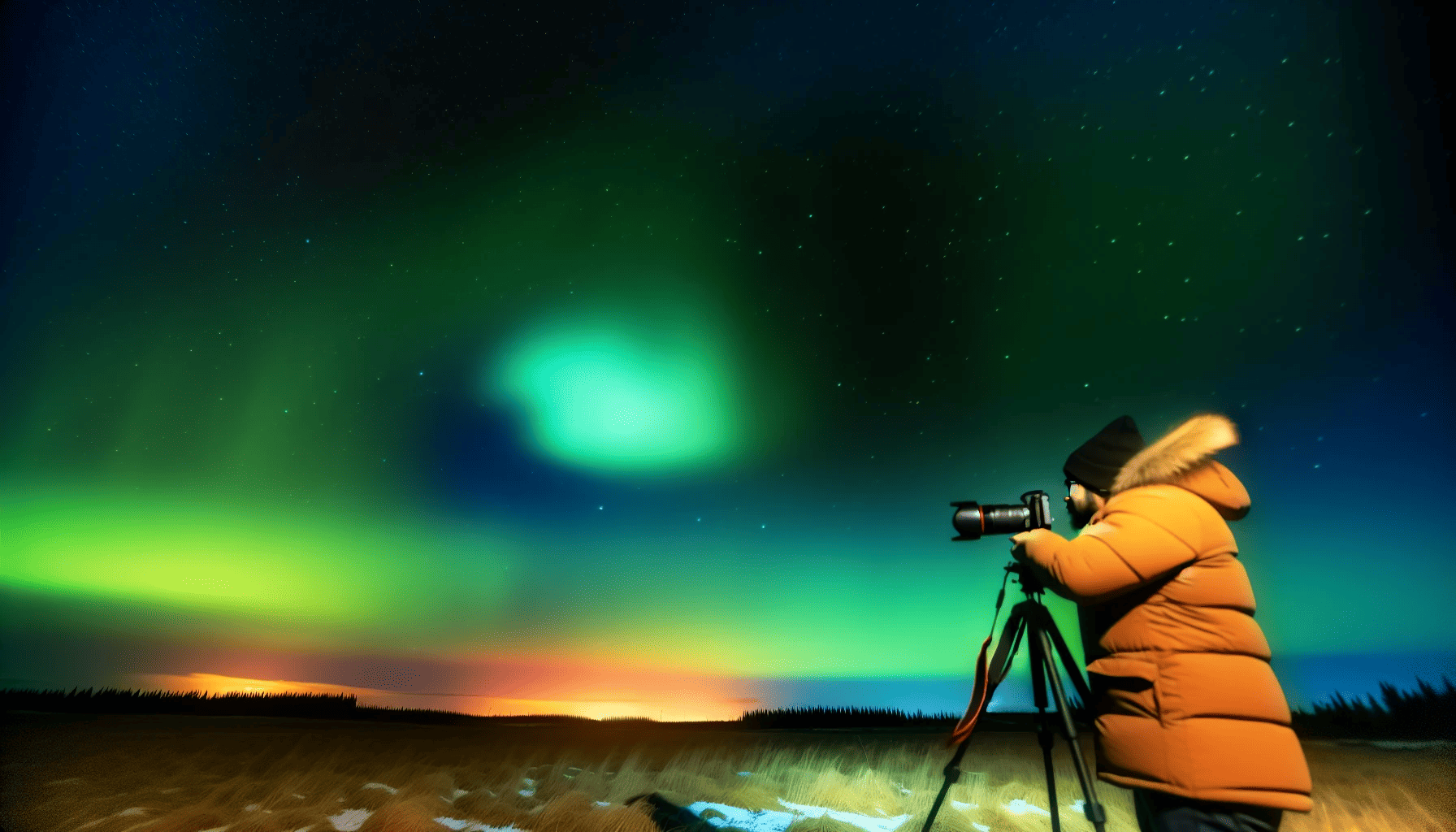
Photographing the Northern Lights can be challenging and rewarding. With appropriate settings and equipment, the breathtaking beauty of the aurora borealis can be captured for posterity. The subsequent sections will provide some vital tips for photographing the Northern Lights, including camera settings and equipment recommendations.
Camera Settings for Aurora Photography
To capture the vibrant colours and movement of the Northern Lights, it’s essential to use the right camera settings. Here are some tips:
Use manual mode to have full control over the camera settings.
Adjust the aperture, shutter speed, and ISO to achieve the perfect exposure in the low-light conditions of the Northern Lights.
Focus manually to ensure that the delicate details of the lights are captured.
Specific camera settings recommended for aurora photography include a wide aperture (such as f/2.8 or f/4), a high ISO setting (starting at 800 and adjusting as needed), and a long exposure time (less than 10 seconds). By using these settings, you’ll be able to capture the breathtaking beauty of the aurora borealis in all its glory.
Essential Equipment
In addition to the right camera settings, several essential pieces of equipment can enhance your Northern Lights photography experience. A tripod is crucial for stability, allowing for long exposure times necessary to capture the faint light of the aurora. A wide-angle lens is also recommended, as it enables you to capture more of the sky and the majestic display of the Northern Lights.
Extra batteries are another essential piece of equipment, ensuring that your camera doesn’t run out of power during your aurora-chasing adventure. Lithium batteries are an excellent choice for cold-weather photography, as they perform exceptionally well in extreme conditions. By using the right equipment, you’ll be able to capture stunning images of the Northern Lights that you can treasure for a lifetime.
Summary
Chasing the Northern Lights in Northern Ireland is a magical experience, offering a unique opportunity to witness one of nature’s most awe-inspiring phenomena. With stunning landscapes, prime viewing locations, and the right tools and resources, you’ll be well-prepared for a successful aurora-chasing adventure. So, gather your camera equipment, check the forecast, and set out on an unforgettable journey beneath the dancing lights of the aurora borealis.
Frequently Asked Questions
When can I see the northern lights in Northern Ireland?
You can expect to spot the beautiful Aurora Borealis in Northern Ireland from October through April, especially between midnight and 2 a.m. Make sure the geomagnetic activity index is 4 or higher!
What is the best time to see the northern lights in my area?
The best time to see the Northern Lights in my area is typically from late September to mid-March, with peak activity occurring between November and February when the skies are darkest and longest for maximum sky-gazing. The strongest lights usually appear between 9 pm and 2 am, though the best sightings often occur between 11pm and midnight.
What camera settings are recommended for capturing the Northern Lights?
For capturing the Northern Lights, it’s best to use manual mode with a wide aperture, high ISO and long exposure times.
What tools and resources can help track the Northern Lights?
Tracking the Northern Lights is made easy with aurora forecast websites, apps, and social media accounts – a valuable resource for any Northern Lights enthusiast.

